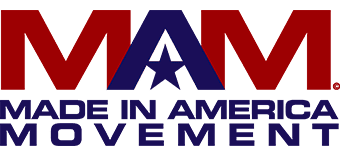Reshoring: Beware the Hype
Reshoring is getting a great deal of hype. Some see it as evidenceof a new renaissance of American manufacturing. Some see it as hope for reducing long term unemployed. Some see it as a business opportunity to sell manufacturing-related equipment, software, and services in the US. And some see it as a business opportunity for managing extended supply chains.
I have participated in some successful reshoring activities,and I have found that the most successful are actually a rebalancing between existing manufacturing plants – one or more in Asia and one or more in the US. Rarely can reshoring be justified on manufacturing savings alone. In most cases where it is successful, reshoring works because it delivers competitive advantage through differentiation.
A review of products, profitability, and market demand will sometimes help management determine that some products are better made in the US, and some products are better made in Asia from a total cost standpoint.This is especially true when the company gets revenue from sales in Asia and, experience suggests, has expectations of 25% or more of its revenue coming from Asia.
Cold start reshoring is more difficult. The first step tends to be US assembly of components imported from Asia and seems to be most successful when the US market wants near-customized selection or a made-to-order product. Zero Motorcycles in Santa Cruz, CA, has been cited in media as a reshoring hero. In fact, Zero would be a good example of reshoring-to-assemble in the US to customer orders. For companies such as Zero, it is too wasteful to guess the market and have the wrong inventory in transit for six weeks. It is better to have basic building blocks in transit and to assemble those building blocks to order. The customer gets quick delivery on a built-to-spec product,and the company has adequate inventory with little waste.
While reshoring heroes are easy to find in the media, reshoring false-starts, failures, and disasters are something people do not broadcast. I was recently involved with a false start. The team was assembled, and the announcements were made with a speech I have heard many, many times: “We are tired of the hassles of an overseas supplier who is unable to meet our promise of quality and on-time delivery. We have capacity in the US, so let’s join our fellow Americans in reshoring our product. Let’s employ Americans, manufacture with a focus on quality, and deliver what we promise on time.”
Staff were pulled from their regular duties, drawings were updated, and new BOM item vendors were solicited, some in Asia and some in the US.
Then the numbers were put together and presented to management, and…management did not like the numbers. Instead of ordering one part number from a contract manufacturer in Asia, reshoring meant they needed to order more than 40 parts from a number of vendors. When added together, these costs were higher than the original SKU. In addition there was more overhead needed to support so many new vendors and logistics and new employees for assembly, etc. In the end, they chose to stay with the lower prices and higher hassles involved with offshore outsourcing.
The outcome was predictable. They put too much hope in the media hype that China manufacturing costs are rising and becoming nearly on par with US manufacturing costs. Local media has found that people buy newspapers to read about positive reshoring stories. Just like people buy newspapers to read about their favorite team winning a championship.
In order to justify reshoring on savings, one needs to have a highly automated process making something in high volumes where the competitive forces drive pricing near the cost of materials. At that point, energy costs and not labor costs are the greatest influence of success. The US has a competitive advantage at the moment regarding energy costs.
Managers considering reshoring need to be able to put a price on the market value of the quick response that local manufacturing allows. They need to be able to put a price on the market value of assembly that is close to the customer. They need to be able to put a price on service and repairs and determine if local assembly can provide some competitive advantage there.
Author Michael Porter suggests that companies can only makea profit with one of two strategies: cost advantage or differentiation. He suggests that every business decision can be boiled down to impacting one of these strategies. Reshoring is almost always a differentiation play. It is rarely a cost advantage play. But too many managers are buying into the media hype regarding cost trends. These supposed trends have not been fully realized, and it is still unclear if they ever will be.
Every company should consider reshoring, but they should view it from the perspective of competitive advantage related to differentiation. Reshoring has costs. Reshoring means more vendors and increased management overhead related to extended supply chains. The challenge is to make your company better and more competitive through reshoring, so increased profits can cover increased costs.
EverettePhillips is CEO and president of Global Manufacturing Network, a provider of contract manufacturing, sourcing, and logistics services for products and components with a focus on items with special engineering requirements.
A review of products, profitability, and market demand will sometimes help management determine that some products are better made in the US, and some products are better made in Asia from a total cost standpoint.This is especially true when the company gets revenue from sales in Asia and, experience suggests, has expectations of 25% or more of its revenue coming from Asia.
Cold start reshoring is more difficult. The first step tends to be US assembly of components imported from Asia and seems to be most successful when the US market wants near-customized selection or a made-to-order product. Zero Motorcycles in Santa Cruz, CA, has been cited in media as a reshoring hero. In fact, Zero would be a good example of reshoring-to-assemble in the US to customer orders. For companies such as Zero, it is too wasteful to guess the market and have the wrong inventory in transit for six weeks. It is better to have basic building blocks in transit and to assemble those building blocks to order. The customer gets quick delivery on a built-to-spec product,and the company has adequate inventory with little waste.
While reshoring heroes are easy to find in the media, reshoring false-starts, failures, and disasters are something people do not broadcast. I was recently involved with a false start. The team was assembled, and the announcements were made with a speech I have heard many, many times: “We are tired of the hassles of an overseas supplier who is unable to meet our promise of quality and on-time delivery. We have capacity in the US, so let’s join our fellow Americans in reshoring our product. Let’s employ Americans, manufacture with a focus on quality, and deliver what we promise on time.”
Staff were pulled from their regular duties, drawings were updated, and new BOM item vendors were solicited, some in Asia and some in the US.
Then the numbers were put together and presented to management, and…management did not like the numbers. Instead of ordering one part number from a contract manufacturer in Asia, reshoring meant they needed to order more than 40 parts from a number of vendors. When added together, these costs were higher than the original SKU. In addition there was more overhead needed to support so many new vendors and logistics and new employees for assembly, etc. In the end, they chose to stay with the lower prices and higher hassles involved with offshore outsourcing.
The outcome was predictable. They put too much hope in the media hype that China manufacturing costs are rising and becoming nearly on par with US manufacturing costs. Local media has found that people buy newspapers to read about positive reshoring stories. Just like people buy newspapers to read about their favorite team winning a championship.
In order to justify reshoring on savings, one needs to have a highly automated process making something in high volumes where the competitive forces drive pricing near the cost of materials. At that point, energy costs and not labor costs are the greatest influence of success. The US has a competitive advantage at the moment regarding energy costs.
Managers considering reshoring need to be able to put a price on the market value of the quick response that local manufacturing allows. They need to be able to put a price on the market value of assembly that is close to the customer. They need to be able to put a price on service and repairs and determine if local assembly can provide some competitive advantage there.
Author Michael Porter suggests that companies can only makea profit with one of two strategies: cost advantage or differentiation. He suggests that every business decision can be boiled down to impacting one of these strategies. Reshoring is almost always a differentiation play. It is rarely a cost advantage play. But too many managers are buying into the media hype regarding cost trends. These supposed trends have not been fully realized, and it is still unclear if they ever will be.
Every company should consider reshoring, but they should view it from the perspective of competitive advantage related to differentiation. Reshoring has costs. Reshoring means more vendors and increased management overhead related to extended supply chains. The challenge is to make your company better and more competitive through reshoring, so increased profits can cover increased costs.
EverettePhillips is CEO and president of Global Manufacturing Network, a provider of contract manufacturing, sourcing, and logistics services for products and components with a focus on items with special engineering requirements.
SOURCE: Manufacturing Executive
The Made in America Movement is a proud Supporting Sponsor of this years Manufacturing Leadership Summit.
ABOUT THE SUMMIT:
The manufacturing industry is at a turning point. Delivering more ROI than any other conference, the 2013 Manufacturing Leadership Summit is built to address what you need most to succeed. Don’t miss this gathering.




Leave a Reply
Want to join the discussion?Feel free to contribute!